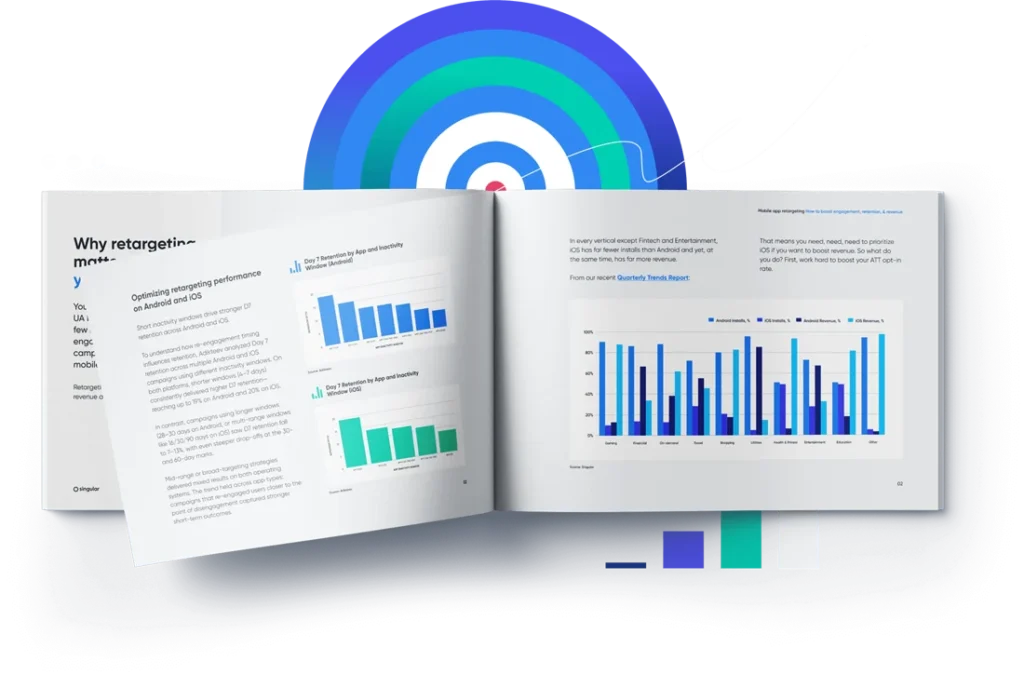Content
Stay up to date on the latest happenings in digital marketing
Churn isn’t always a no. Sometimes it’s not now or maybe an I’m not sure … or just a “sorry, got distracted by a cute cat on TikTok.” So building a retargeting strategy that works is critical.
I recently chatted with Self’s Paul Kovalski about retargeting.
He’s a veteran mobile marketer who’s driven $250 million in revenue via paid media, and he also hosts the Efficient Spend podcast. He knows a thing or two about retargeting strategy.
Hit play and keep scrolling:
Retargeting strategy: rocket fuel for growth
Kovalski has led growth at food and adtech and financial companies, and his current role is head of paid media and creative at Self, a credit-building company in the financial space.
Retargeting strategy is rocket fuel for growth, including for fintech.
In our new mobile app retargeting guide we lay out retargeting tips and mechanics across multiple verticals. Fintech is harder than most: money is emotional, consumer trust takes time, and customer acquisition cycles are long. But getting it right means you’ve built a structured revenue machine for consistent incremental growth.

As you can see in the full guide, getting your retargeting strategy right can result in massive growth:
- 2X revenue
- 10X engagement
- 70% lower CPC
- 30% higher ROAS
- 150% more conversions
That’s why retargeting well is rocket fuel for your growth engine.
In this post I’ll focus on Paul Kovalski’s tips, so it’ll be most relevant to other fintechs, but if you run growth for different verticals you’ll find some valuable take-aways as well.
(And, of course, you can get the full guide right now to get all the tips for multiple verticals.)
Retargeting strategy principle #1: owned before paid
Kovalski has a simple rule: if you can re-engage a lapsed user, player, or customer for free, do that first. (Conserving cash is smart!) So email, push and in-app notifications, and SMS are your first lines of re-engagement.
They’re super cheap.
They’re super fast.
And they’re super personal.
Only after you’ve exhausted those levers do you need to layer on paid retargeting.
This obviously matters for fintech because people see something, they consider it, they compare it to other things, and they Google or ChatGPT it. They don’t always click apply on the first visit. But I’m guessing fintech is not unique in that respect: retail is often similar, especially for larger purposes, and even installs of hypercasual games need some marketer follow-up and messaging.
The good news; owned channels let you meet people where they left off. You have context on what they did and didn’t do. And, when you run campaign elements on owned channels, you’re not bidding against 14 different payday lenders and neobanks.
(Insert your own examples there for whatever vertical you’re in.)
Quick sequence to try
Looking for a quick start?
We have a full quick-start guide in the full report, but here are 4 things to set up right off the bat:
- D0–D1: didn’t finish set-up
Try an ease-of-use push notification: “You’re 2 minutes from finishing setup,” and provide a Singular deep link to the exact step - D3: finished set-up but haven’t come back
Try an educational email: “What happens to your credit score if you do X?” Education is often better than a hard sell, Kovalski says.. - D7: haven’t deposited funds or taken next steps
Send a value-focused SMS if you’re compliant and they’re opted-in: “Start saving money on your loans right now.” - D10+: don’t show significant, consistent engagement that would lead to monetization
Try some paid retargeting for people who haven’t responded. Use some fresh creative and a high-trust value proposition.
Retargeting strategy north star: incrementality or it doesn’t matter
Retargeting dashboards often look amazing. Great eye candy. Everyone’s happy.
But the tough question is: did you cause the conversion or just take credit when it happened?
Incrementality is the KPI, not just CPA or ROAS. That means your retargeting strategy should include some geo-lift or holdout tests when audiences are big enough (or other means of measuring incrementality). And you’ll need to have some patience and let those tests run long enough so that your results reach statistical significance.
Track cohort LTV lift versus a clean holdout.
Retargeting often boosts conversion rates up to 150% and retention by high double digits, but you want to be sure it’s incremental and not cannibalized organic.
Also: watch the hidden retargeting trap.
If you’re running automated user acquisition campaigns via Meta Advantage+ or Google’s PMax, for example, you might already be retargeting without knowing it. Self audit: sometimes you’ll find a startling share of your acquisition budget is actually hitting existing users, players, or customers.
Try to use exclusions on UA-focused campaigns (recent visitors, app users, signed-up but unfunded, etc.), and separate out your campaign reporting by acquisition and retargeting.
Want the full playbook?
Our full report covers vertical-specific playbooks (gaming, retail, travel), iOS/Android specifics post-ATT, timing charts, partner POVs, and a quick-start checklist.
Because “no” can become “not now” can become “OK.” And that’s when your retargeting strategy pays off bigtime in higher conversions, retention, and monetization.



